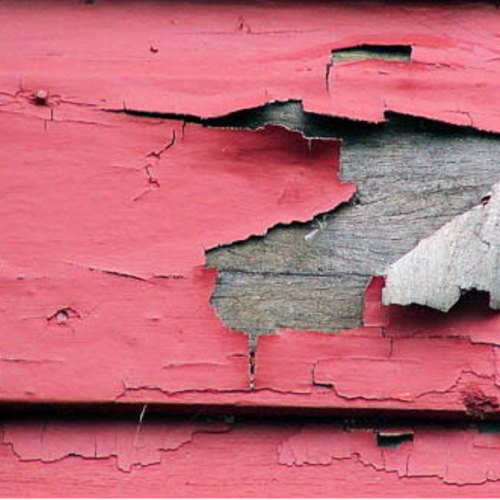You are not alone out there in the run up to new lead paint laws that take effect on April 22 of 2010. For us the law won’t alter the way we do business on a whole bunch of jobs since the majority of our projects are on homes born after 1977–homes to which the law does not apply. We work mostly in the suburbs, and considering the enthusiasm with which this city sprawled through the last quarter of the 20th century, there is no shortage of 15-30 year-old homes that need help. However, the small number of projects that we do on older homes tends to account for a disproportionally large percentage of our gross revenue so that means we have to pay attention.
There are two types of certification
An examination of the guidelines reveals a distinction between who must become certified for what: Renovation companies that are not sole proprietorships must be certified as both a “firm” and as a “renovator”, while sole proprietorships require only the “renovator” designation. To become a Certified Firm, you have to apply to the EPA www.epa.gov/oppt/lead/pubs/toolkits.htm and prove that a representative of your company has completed the proper training–for us that is Tommy, our VP of Construction Operations—and pay $ 300.00 (registration is good for five years). This can take up to 90 days so you better get started today!
The representative who has completed the training is the renovator. Renovator training involves attendance at an 8-hour class (better than defensive driving, but not as cool as concealed handgun training), with lots of technical procedures, pretty good pizza and a very nice certificate. Tommy learned that if children under the age of six are present on a regular basis in an older home where more than 6 square feet of lead-based paint are to be disturbed in a room (or 20 sq. ft. of lead-based paint on the exterior), testing must be done. The testing is not difficult, and it is not technical, but like everything else related to compliance and CYA it requires comprehensive documentation.
We deal with the small jobs and sub out the big stuff
If a swab comes back the wrong color, we have to do two things: use more swabs to see how widespread the issue is, then decide if the cure is something we want to tackle ourselves or not. It will be something we want to do if it involves, for example, limited removal and repair of some baseboards and window sills. Anything more than that, though, means we hire someone to do it the dirtiest work for us—an independent contractor who is a full-time specialist. And we are no more interested in becoming a lead-paint expert than in becoming a master plumber, electrician, or watchmaker. What we are very interested in is orchestrating the specialists and managing the new regulations. We must adhere to important new standards and document every single step along the way whether we do the remediation ourselves or not.
Share your leaden war stories with Tommy, our lead Renovator or Michael, President of our Certified Firm!
Weekly Newsletter
Get building science and energy efficiency advice, plus special offers, in your inbox.













5 Comments
Certificationand registration
It was explained to us in our Lead safe training that all companies regardless of whether they are a sole proprietor or incorporated must register and have a certified renovator under this law. Has something changed since my training on the 20th of april? This has been the worst roll out of a law that I have personally experienced. We still do not even know which HEPA vacuums will comply with the law. This rule is frustrating to say the least. I don't mind complying but I cannot even get a firm answer on what complies.
Correct on Sole Props, Chaz
Yes, Chaz, you are correct - firm certification and renovator certification are separate items, and a sole prop will need both.
The vac thing is a pain, but my understanding is that any vac that is designed to take a hepa filter and where the air goes thru the filter first (i.e. before it passes thru the motor) should work.
Lots of changes. The opt-out exception has been revoked, there's a new pamphlet, etc. And some states are instituting stricter standards on both the threshold where the rules kick in and the level of testing required before ending the job.
Testing not required
Strictly speaking, you don't need to test anything in a pre-1978 house, you just need to follow the protection/cleanup/verification protocol.
You can test the paint on surfaces you will be disturbing, and if you find it is not lead-based-paint, you don't need to follow the protocol. But, if it comes out positive OR if you don't test it, you do need to follow the protocol.
Sole Proprietor
Yes, every firm must be registered no matter if sole prop, partnership, or corporation. This was not made clear during our training 4 months ago, but it is clear now. After speaking with my instructor again he cautioned me that this regulation is very "fluid", with several more tweaks and updates to be proposed in the coming months, meaning this muddy picture may not be cleared up appreciably for a while yet. The prudent advice is to monitor these developments carefully to make sure your company is in compliance,
A clarification on testing and HEPA's
As for the blog, Testing is not required regardless of job, but lead safe work practices must be employed regardless, as well as homeowner education, record keeping, and firm/renovator training. Some homeowners may not want to verify the existence (and therefore the need to disclose) of lead in their home, If there is a high probability that lead is present, or if compliance is not that difficult, assuming that lead is present and skipping the time/liability/expense of verifying may be a good approach.
Hepa vacs- The hepa filter must be the FINAL filtration point and an integral part of the vac, and the vac must be a sealed unit. That's what the EPA says.
As far as what's going on now, EPA's stated policy is that enforcement continues on the lead-safe work practices and record keeping portion of the law, but EPA will not pursue fines for firm certification violations 'til 10/1 and they will not pursue individual renovators for violations of their certification, provided they are scheduled to take a class, 'til 9/30. So, basically, unless you have already applied for firm certification, you will likely be in violation (again) come 10/1 given the 90 day delay on EPA's end. And, the responsible party on site should be trained or signed up. I don't know how you'd even begin to comply with the rest of the law without going through the training.
Log in or create an account to post a comment.
Sign up Log in